#other: greig fraser
Text

I've got a theory about why this happened, and I think the other Mandoverse shows support it, especially Mando S3. Basically, these shows have over-committed to using the Volume to the point that it hurts their action scenes. Not just in terms of how they look and feel, but what can even be put in front of the camera.
As Greig Fraser (the brilliant DoP who worked on early Mando as well as Rogue One, Dune and The Batman, and first got the Volume to work) has said, the Volume comes with pretty steep limitations. Spielberg has managed to do some things with it that Fraser hadn't thought possible, but for the most part it restricts what angles you can shoot at and also what movement you can have. Film Crit Hulk talks about it in more detail re Mando back in 2020:
Note HOW MANY times they’re standing relatively flat and the camera angle is directly parallel to a ground so that it puts the horizon in the same 1/3 of the frame spot behind them. They do this because if they raise the camera higher (as many shots should and would) it would reveal the “boxy” angle of the stage. It may seem small, but it REALLY de-emphasizes the natural surrounding and I’m worried it’s hurting the overall look of the show.
And it occurs to me that arguably the best-shot action of that series is probably the one where they went out and just filmed in the California hills. Note how Boba gets to tower over that one Stormtrooper and how there's a real sense of wham when he lands.
youtube
If you're shooting everything in a context where nothing can move all that fast, though, it really hurts your most kinetic characters. When Kelleran Beq gets his showcase in Mando S3, the camera can't move to add oomph to his strikes or give him a hero shot (in Kenobi you see them trying this with Vader, but they have to stop short of an angle which will actually give the image punch). If you've seen Dune Part Two, think of how the camera races along with Paul and Chani in some of their fights with the Harkonnens. That's wholly missing here.
And this also impacts the old jet packs (and Jedi acrobatics, for the most part). Whereas Jango could rocket around merrily, it's notable that the Children and the Nite Owls alike only really use their packs for dedicated aerial scenes. In the pirate fight, you can easily imagine them boosting from rooftop to rooftop and sparking even more "high ground" memes, but instead they conduct the fight entirely at a walking pace and on the ground.
And all of this hurts Sabine in particular, because like Ahsoka, she originated in animation and has previously been depicted in a really kinetic way. Even without a jetpack, she's a very acrobatic fighter in Rebels, and it's one of the things which makes her a really fun character. But in the process of moving to live-action, Filoni and co opted to change the characters to fit the Mandoverse style, instead of changing the style to fit the characters. The result is that lots of the things that first made Sabine so cool and fun just aren't really possible now.
58 notes
·
View notes
Photo

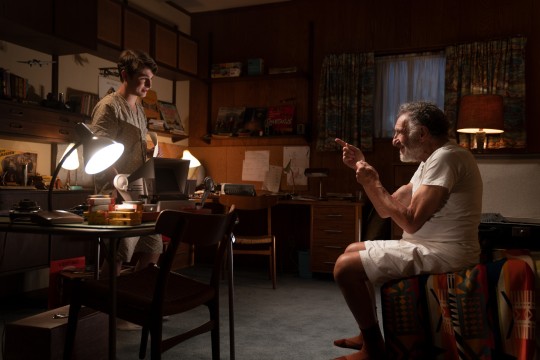


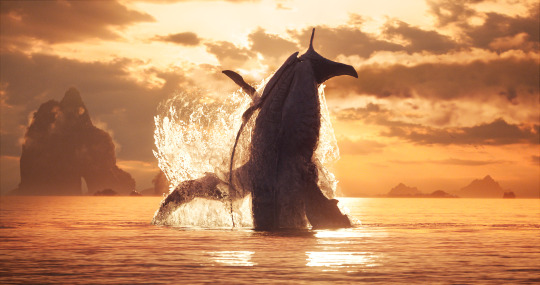


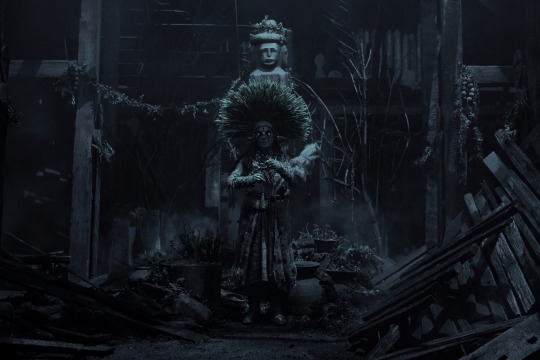
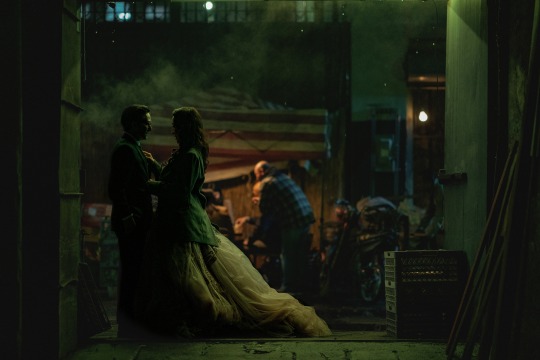

My Best of 2022: Cinematography
My Best of 2022 is a series of annual lists in which I pick the best of the best from 2022, all leading up to my official picks for My Top 10 Films of 2022.
There weren’t many films this year that absolutely blew me away in terms of their cinematography. There was a lot of solid work, sure, but only a few that really blew my hair back. Top Gun: Maverick was easily the best of the bunch, and while The Fabelmans wasn’t near the best of what we’ve seen from Kaminski, it was a beautifully shot film. Aside from some really great performances, Sandgren’s cinematography (along with Tom Cross’ editing) was the saving grace for Babylon. And the blending of lighting between CGI and live-action that Carpenter achieved made up for what a corny screenplay Avatar: The Way of Water had. The others are solid/great, too, but I’ve already said too much for a category for which I normally let the work speak for itself. Anyway, here they are…
My Top 10 Achievements in Cinematography in 2022!
1. Claudio Miranda for Top Gun: Maverick
2. Janusz Kaminski for The Fabelmans
3. Linus Sandgren for Babylon
4. Hoyte Van Hoytema for Nope
5. Russell Carpenter for Avatar: The Way of Water
6. Greig Fraser for The Batman
7. Frank Passingham for Guillermo del Toro’s Pinocchio
8. Jarin Blaschke for The Northman
9. Larkin Seiple for Everything Everywhere All at Once
10. Ben Davis for The Banshees of Inisherin
Enjoy!
-Timothy Patrick Boyer.
Next Up: Supporting Actress; Supporting Actor
More of My Best of 2022...
#movies#film#cinematography#best of 2022#babylon#top gun: maverick#the fabelmans#nope#mybestof2022#avatar: the way of water#the batman#guillermo del toro's pinocchio#the northman#everything everywhere all at once#the banshees of inisherin#movie#lists#cinephile#movie blog
23 notes
·
View notes
Text
It took me almost a year, but I finally watched The Batman. I’m terrible at watching movies once they leave theaters and I wasn’t able to catch it when it was playing because I was trying to avoid crowds and it wasn’t in theaters as long as I expected. And that runtime is LONG so it’s a commitment...so here I am, nearly a year later.
ANYWAY! I’m thrilled. It was exactly what I wanted from a Batman movie. It was THE Batman movie I longed for since I was a kid, it feels like. The visuals were everything I wanted a Batman movie to look like. I wanted a firmly noir take for so long and a strong emphasis on the detective side of Bruce because he’s the world’s greatest detective and we got that. Don’t even talk to me about the soundtrack/score and just...Greig Fraser and Michael Giacchino, I bow down to you.
The first sign that this was going to be a radically different film from its predecessors was its cast. Yes, previous movies had amazing actors, but Matt Reeves was going for a specific type of actor and you saw it as John Turturro said. I do think, though, that some of the cast members were stronger than others and even with the ones that were convincing to me, I thought that the directing was a little shaky at times because there were moments of acting and line delivery that were a miss for me and I wanted something different from the actor in that specific moment.
I don’t think the movie was perfect. There are weaknesses, mostly with certain parts of the script and the character building, but I don’t even care! This is one of my favorite Batman movies EASILY when you put everything together. And Robert Pattinson immediately became my favorite live action Bruce/Batman. I can be all serious about his version of the character, but I’m tired so I’m just going to say that he’s the perfect lil emo Bruce/Batman. He's just so grungy and joyless and pasty. Look at him like a stringy-haired vampire, pathetically needing to put on sunglasses indoors! Awkward and socially inept and withdrawn. (I also love the idea that he hasn’t developed his Bruce persona yet and I want to see what they’re going to do with that, if anything at all, in future films because we’ve seen the core of Bruce—or at least the foundation for him because while he’ll retain a lot of traits, this is a young Bruce who has a lot of maturing to do too.)
#okay to be fair i have virtually no memory of older batman movies pre-nolan era although my memory will prob kick in if i rewatch them#i may not have watched them in their entirety because i'm pretty sure if i watched them they were at family friends' houses#and we might not have been able to watch the whole thing#or if we did i was very very young
3 notes
·
View notes
Text
Thanks for the tag, @direwolf-summer! 🥰
5 movies, 4 fav songs right now, 3 essentials, 2 fav books, 1 quote:
Movies (going to assume this means 5 random movies):
1. The Batman. Can’t stop thinking about Greig Fraser’s cinematography.
2. Velvet Goldmine. I want to rewatch it together with my partner this time.
3. Drive My Car. Haven’t seen it, but I saw a gorgeous gif set of it yesterday, so now it’s on my list.
4. Below Her Mouth. As bad as Erika Linder is hot (very). Also the most true-to-life lesbian sex.
5. Handsome Devil. I watched Heartstopper the other day, and it reminded me of this film.
Songs:
1. New Order - Blue Monday
2. Malaria! - Kaltes Klares Wasser
3. Placebo - Surrounded by Spies
4. Parálisis Permanente - Quiero ser tu perro
Essentials:
1. Biker jacket
2. Cat plush pillow
3. Moisturiser
Books:
1. The Secret History by Donna Tartt
2. I keep this spot vacant. It’s always changing
Quote:
“I have a photograph of you when we ate an orange in bed. What month was that in? What did you want from me? Every book is a book, is a thing you feel by yourself. You are here. I am alone in this poem.”
Alex Dimitrov, from You Were Blond Once
Tagging @aryastark-valarmorghulis, @kattlupin, @kittycargo if they have the time/wish to do this.
10 notes
·
View notes
Text
Color Seminar Thougts💭
In the color seminar it struck me that of course that color changes from ways of viweing it. On a screen and to live viewing a artwork but even then it can be altered by light and shadow and possibly mood.
I use alot of color palette works in my projects as i use photoshop a bit and the marquee tool is a handy application to get the feel of a scene or art piece to distinguish the general vibe. (See those below this entry)
The use of color to distinguish intent in the eveyday lives of people like signs on roads being yellow as that catches the eye immediatly than any other color or roads being black tarmac so white has to be used on lines on the road as a contrast.
Color is massivly important in the lives of artists and to have such easy access to color in paint and digital art is something new to this generation of artists.
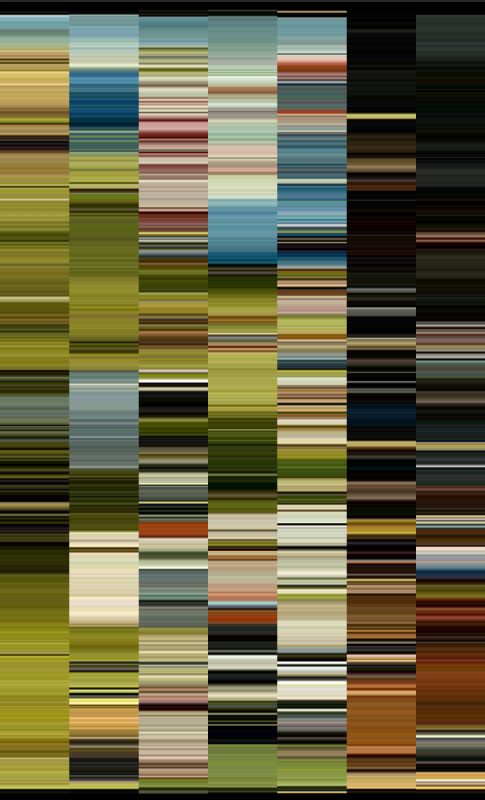
This is a color pallete of the Painting Garden of Earthly Delights, a personal favorite. The contrast of colors from Eden (left) Earth (middle) and Hell (right) shows a real mastry by Hieronymus Bosch.

Another palette of a great artwork The Last Judgement by Giotto. I took these to contrast Heavan (left) and Hell (right)

And this is a pallete for the 2021 film Dune. The cinematography in the Dune is done by by well known cinematographer Greig Fraser. He gets the sci fi on a sand planet perfect.
2 notes
·
View notes
Text
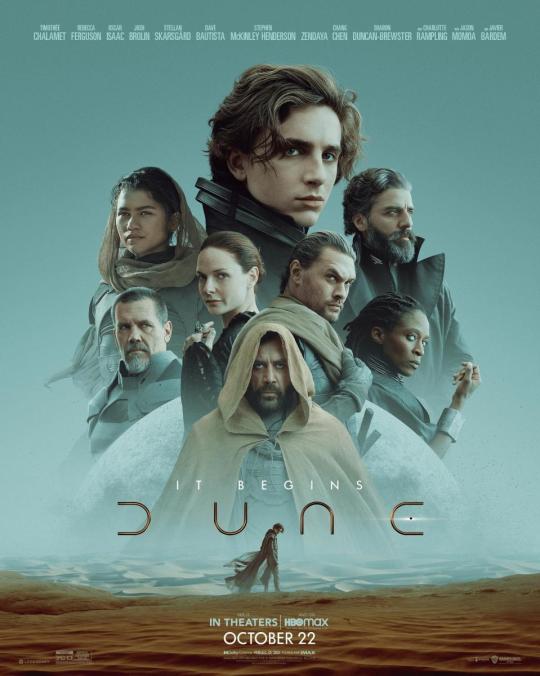
Dune (2021) :
Based on the 1965 epic science fiction novel by Frank Herbert , it is the second iteration of the franchise . Dune is the story of a young man Paul Atreides played by the stellar Timothee Chalamet whose family has been ordered by the Emperor to take charge of the mining operation of a valuable mineral " The Spice " on the desert planet Arrakis , which is a trap set by their family foe the Harkonnens led by the Tryannical Vladimir Harkonnen played by Stellan skarsgard who makes a brief appearance in the film . After directing the superb Blade runner 2049 Denis Villeneuve returns to the big screen with another Sci - fi spectacle . Also co - starring are Rebecca Ferguson , Oscar Issac , Jason Momoa , Josh Brolin and Zendaya who also makes a brief appearance in the film . The cast dazzles with stunning performances . The scale of the production of the film from the costumes to the makeup and the immersive environment created is spot on and enthralling . Clocking around 2 and half hours its pace is tolerable although the runtime is questionable while it covers roughly half of the book . The film is meticulously crafted while coming close to the glory of the book or dare i say better . Music for which was composed by the legendary Hans Zimmer also makes profound impact on the viewing experience , while it also has instances of Female vocals in the background which seem rather a nuisance than bliss . The highlight of the film is the cinematography by Greig Fraser whose Visual storytelling loops you into the world of Dune . Particularly the scenes of the giant Sandworms and Spaceships are euphoric as well as thrilling . Despite its marvellous storytelling Dune is too long and Villeneuve's decision to direct only the first half half was fair . Unlike other Sci-Fi spectacle the film which are more engrossed in eye popping visuals and massive VFX , it is more focused on the human element it is what makes it a unique and an emotional journey , notably the relationship between young Paul and his protective mother Jessica played by Rebecca Ferguson who delivers the best performance in the film . Dune is a spectacle which deserves to be seen on the big screen .

#dune 2021#dune movie#dune book#paul atreides#lady jessica#zendaya#oscar issac#jason momoa#josh brolin#dune spoilers#dune frank herbert
4 notes
·
View notes
Text
'Christopher Nolan’s biopic “Oppenheimer” has already grossed over $270 million domestically, setting a number of records both for the filmmaker and in general. There’s been a lot of talk about its Oscar potential next year, so it’s time to get down to the nitty-gritty in the below-the-line crafts categories where it is likely to get nominations, as well as its primary competition in those races.
The presence of “Dune: Part Two” — unless Warner Bros. moves it due to the ongoing writers’ and actors’ strikes — hangs over “Oppenheimer” like a dark Oscar cloud. The first “Dune” won six Oscars in early 2022, all in craft and technical categories, only missing out on two of its nominations there for Best Costume Design (which went to “Cruella“) and for Best Makeup and Hairstyling (which went to “The Eyes of Tammy Faye”). It’s fairly safe to presume that the finale of Denis Villeneuve’s two-part adaptation of Frank Herbert’s sci-fi classic will do just as well in those same categories.
In fact, “Oppenheimer” and “Dune: Part Two” could be going head-to-head in many key categories, although Warner also has “Barbie” now to push in a number of those same races, particularly for Best Production Design and Best Costume Design (the latter of which it’s likely to win).
Let’s consider each category for “Oppenheimer” and what it’s likely to face in its path towards Oscar night.
Cinematography
To shoot his latest magnum opus, Nolan reunited with DP Hoyte Van Hoytema, who previously earned an Oscar nomination in 2018 for his work filming Nolan’s previous WWII-set drama, “Dunkirk.” Whether you’re watching “Oppenheimer” in IMAX 70mm – the preferred viewing method since Van Hoytema shot using IMAX cameras – or just in 70mm, “Oppenheimer” is a big screen experience like no other. Although much of it takes place in a cramped interrogation room, the scenes where it breaks out into the wide vistas of New Mexico and the Los Alamos campus where scientists develop the first atomic bomb leave little question what Van Hoytema’s camera framing and lighting bring to the film. It regularly alternates between black-and-white and color, something that would normally be difficult to do, but all of it looks so good that the eye rarely notices the switches after a point. There’s little question Van Hoytema will receive his second Oscar nomination, though he’s going up against previous “Dune” winner Greig Fraser.
Production Design
Production designer Ruth De Jong came onto her first Nolan film after performing similar duties for Jordan Peele’s “Nope” (also shot by Van Hoytema). This is another crucial craft because it involved literally building the Los Alamos complex where the scientists developed the bomb, as well as showing its evolution over time. De Jong and her team also had to dress the locations in which Oppenheimer and Robert Downey Jr.’s Strauss are being interrogated. Although De Jong’s work is undeniable, this might be a tougher category for “Oppenheimer” to win since the academy often goes for more expansive and fantastical films here, which could allow “Dune” production designer Patrice Vermette to win his second Oscar.
Editing
Another craft that’s crucial to achieving Nolan’s vision was the editing by Jennifer Lame — her second time working with Nolan after 2020’s “Tenet” — especially keeping track of the two running storylines and building up the tension leading up to the Trinity test. Despite having worked on Best Picture-nominated movies before, her work on “Oppenheimer” is likely to be her first Oscar nomination. Interestingly, Lame previously edited a lot of “Barbie” co-writer Noah Baumbach’s movies, including the Oscar-nominated “Marriage Story” as well as many movies that Baumbach made with Greta Gerwig, such as “Frances Ha” and “Mistress America.”
Original Score
If there’s one category where “Oppenheimer” may have the best odds, it’s Best Original Score, because previous winner Ludwig Goransson (“Black Panther”) has delivered another fantastic set of compositions that drives the emotional tension throughout Nolan’s three-hour film. Even so, Goransson is going up against two-time Oscar winner Hans Zimmer and his “Dune: Part Two” score, which could be just as groundbreaking. Right now, it looks like it could be a photo finish.
Sound
The other category where “Oppenheimer” is very likely a frontrunner is Best Sound, a category that often goes to the loudest movie, which is quite achievable when you literally set off an atomic bomb in one of your movie’s pivotal scenes. There’s a faction of movie-lovers who always seem to take issue with the sound mix in all of Nolan’s movies, but the sound work in “Oppenheimer” is next level, even if you just take into account the moments leading up to and after the Trinity atomic bomb test. The use of sound and silence leading up to that explosion helped create one of the most breathtaking film moments of the year. In other words, Nolan’s sound team has made “Oppenheimer” as much a sonic experience as it is a visual one.
Costume Design
With any period piece, costume design is key, and dressing Cillian Murphy’s title character and those around him was important in establishing the authenticity of “Oppenheimer’s” period look. It was the work of costume designer Ellen Mirojnick, working with Nolan for the first time. While she’s never received an Oscar nomination for her work, she is a Primetime Emmy winner for “Behind the Candelabra” with two other nominations at those awards. Unfortunately for her, this category probably belongs to “Barbie,” and it will be hard for anyone else to make much of an impact.
Makeup and Hairstyling
With any biopic, makeup and hairstyling can play a large part in turning the actors into the known roles they’re playing, such as Jessica Chastain as Tammy Faye Baker in the aforementioned “The Eyes of Tammy Faye” or Gary Oldman as Winston Churchill in “Darkest Hour.” In both cases, the actors and the makeup/hairstyling won Oscars.
The teams put together by hair department head Jaime Leigh McIntosh and head of makeup and prosthetics Luisa Abel did a lot of sometimes imperceptible work turning the mostly male actors into their real-life counterparts, although not as many people may know what these original historical figures looked like. Because of that, this might be a tougher category to win for “Oppenheimer,” especially with other movies coming this season that have turned their actors into better-known subjects, such as the work used to turn Bradley Cooper into Leonard Bernstein for “Maestro.”
Visual Effects
Best Visual Effects is a category in which many of Nolan’s movies have thrived: his films “Inception” (2010), “Interstellar” (2014) and “Tenet” (2020) won that Oscar. Yet oddly, this is another craft category where “Oppenheimer” might have a tough time. That is partly because Nolan has spent a lot of time on the press circuit declaring that the movie didn’t use any CGI. It will have to put together an impressive VFX reel to convince academy members in the visual effects branch that it deserves to get nominated.
In the end, what it comes down to as far as the battle for craft Oscars between “Oppenheimer” and “Dune: Part Two” is whether Oscar voters will want to give the same awards to the conclusion of Villeneuve’s sci-fi epic or honor some new crafts people working with Nolan. “Oppenheimer” is not expected to have a candidate in the Best Original Song category, so that leaves all the potential acting, writing and directing nominations it could be vying for — and of course Best Picture...'
#Hoyte van Hoytema#Christopher Nolan#Tenet#Inception#Interstellar#Ludwig Goransson#Ellen Mirojnick#Los Alamos#Trinity test#Ruth de Jong
1 note
·
View note
Link
Lately, plenty of ideas have been floating around for methods to mine the Moon. That is undoubtedly partly due to the growing enthusiasm for Artemis, NASA’s lunar exploration program, and its planned support for a long-term human presence on the Moon. But what would make the best technique to get valuable material off the lunar surface? How about zapping it with lightning? That is the idea behind a NASA Institute for Advanced Concepts grant given to Dr. Amelia Grieg of the University of Texas at El Paso. And it seems to work. The technique, formally known as “ablative mining,” is similar to other methods we’ve covered before, such as redirecting the Sun to vaporize lunar regolith and capture it in a collection system. However, those experiments had downsides, such as leaving a blackened layer of melted regolith on the surface. Ablative techniques don’t suffer from the same downsides. The underlying idea is to put a circle that can hold two electrodes on either side and force enough charge through the electrodes to create an arc between them. Any regolith in the path of the arc (basically lightning) would immediately be ionized and turn into its constituent ions (iron, oxygen, and silicon being three of the most common). Description of the work done for the ablative mining NIAC project.Credit – EMu Aerospace YouTube Channel The electrodes themselves would be attached to a rover with specially designed optical systems that focus the flow of free-standing ions into a narrow channel. Those free-flowing ions are then subjected to magnetic fields, which separate heavier ions from lighter ones. Each is ushered into a container specially designed to hold that specific ion. Full containers can easily be offloaded from the ionizing rover and transported back to a centralized base, while the rover can also be loaded with a new container. That all sounds relatively simple, and in concept, it is. It uses many of the same underlying techniques of other lunar regolith mining ideas. However, the ablation process, though energy-intensive, is likely one of the most effective ways of separating the lunar regolith into its constituent components. Just how effective it would be was the subject of the work as part of the NIAC grant. Dr. Grieg purchased some regolith simulant and stuck a couple of electrodes in it. After some tinkering, she is now able to consistently produce an arc between the two electrodes through regolith simulant, thereby ionizing part of the regolith. From publicly available sources, it’s unclear how much of that regolith simulant was turned into usable ions, but that seems like a viable next step in the research pipeline for the project, as Dr. Grieg mentions in an explanatory video for NIAC. Fraser discusses the concept of ISRU. She also estimates that it would be possible to mine around 10,000 kgs of regolith per year with four full-sized rovers. That could be enough to support a small base with all the raw materials it needs on certain parts of the Moon (such as the south pole, where there are significant water reserves). For now, the project doesn’t appear to have received a Phase II NIAC grant, and Dr. Greig seems to have joined Blue Origin as a manager, but it’s unclear if she’ll be able to continue research into her idea. But part of what NIAC does is it develops ideas to a certain point, and one of the things we pride ourselves on here at UT is bringing people’s attention to unique ones. Shocking the lunar surface with lightning certainly passes that test. Learn More:A. Greig – Ablative Arc Mining For In-situ Resource UtilizationUT – What is ISRU, and How Will it Help Human Space Exploration?UT – What Role Will NASA Play In Developing ISRU On The Moon?UT – ESA Wants Your Ideas for Living off the Land… on the Moon Lead Image:Artist’s depiction of a rover with an ablative mining system on it.Credit – Janet Hill / Creative Studios / UTEP Center for Faculty Leadership and Development The post We Could Get Material On The Moon By Shocking It With Lightning appeared first on Universe Today.
0 notes
Text
FOREFRONT 10 : THE BATMAN (2022)
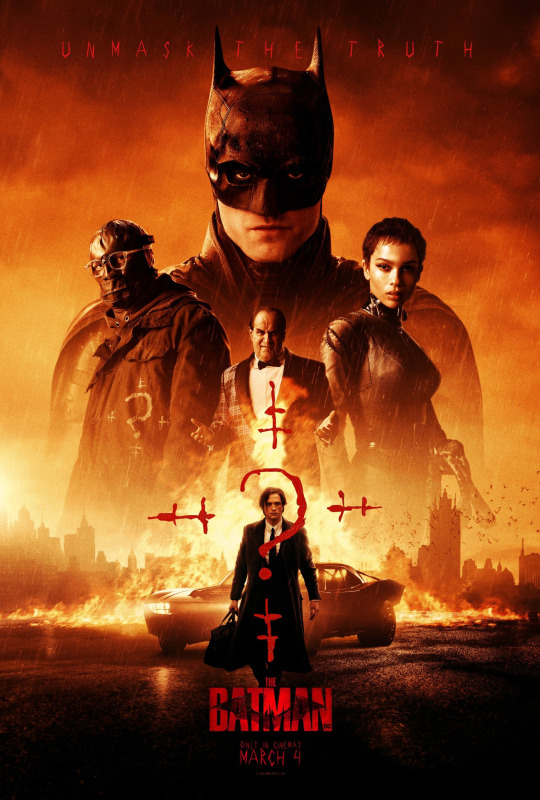
This film is one of my favorite films be it in terms of entertainment and in terms of finding references for lighting, shot selection, and storytelling techniques. I've learned a lot from this movie and john wick 4 and I will be starting to apply those to my projects once I'm done with my major project. I can draw inspiration from the film's visual style and composition. Matt Reeves is known for his attention to detail and visual storytelling, and this film definitely had unique and visually striking scenes. From the lighting choices to the use of color, I have studied the film to understand how to create mood and atmosphere through visuals.
I read this article from Variety which featured the cinematographer Greig Fraser talking about a lot of cinematic aspects of the film. there was a point where he explained how he just assigned 2 lights to 2 characters and stuck with it throughout. this is something that I've always wanted to do in my films as well, which is being able to tell a story with just light. I've also analyzed the film's shots and framing to gain inspiration for my own future work.
youtube
this film also delves into the psychological aspects of the characters, providing a deeper understanding of their motivations and inner struggles. As mentioned in the above video, The narrative depth has inspired me to explore similar themes in my own work, whether it's through illustrations, paintings, or other visual mediums.
Understanding how the film presents complex characters and their emotional journeys can help me tell more compelling stories in my own creations. this film also features intense action sequences. I've studied the film's choreography, camera movements, and editing techniques to understand how to capture dynamic and visually stunning action sequences and also find inspiration in these sequences to depict motion and energy in my own work at some point because one of my future works is a part of the action genre and it will involve action sequences so this film will definitely teach me a trick or 2 and help me achieve those intense dynamic sequences.
REFERENCES :
Reeves, M. (2022) The Batman. United States: Warner Bros. Pictures.
Viramontes, D. (2022) How ‘the Batman’ cinematographer Greig Fraser reinvented the Dark Knight’s big screen presence, Variety. Available at: https://variety.com/2022/film/news/batman-cinematography-greig-fraser-batmobile-1235197570/ (Accessed: 23 August 2023).
Tomasso, P. (2022) Why the Batman is so beautiful.: A cinematography video essay, YouTube. Available at: https://youtu.be/STynLl-2FqU (Accessed: 23 August 2023).
0 notes
Text
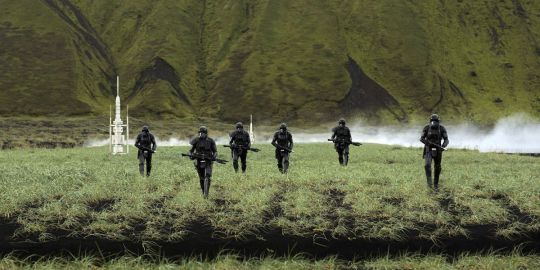

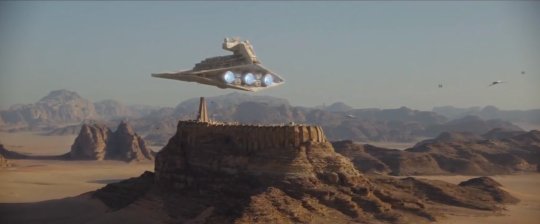
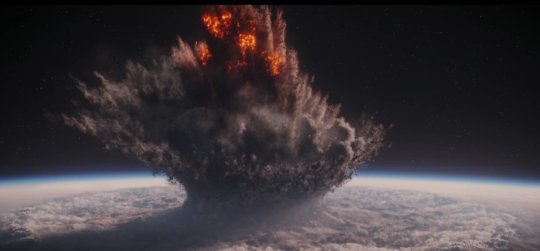
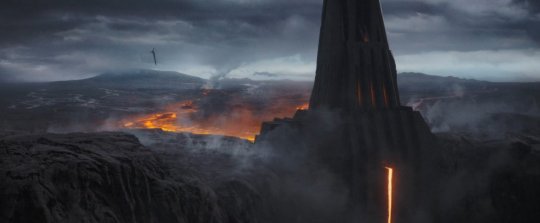


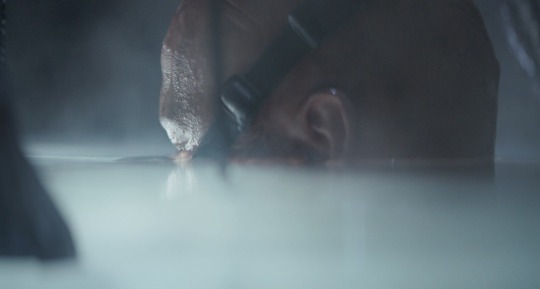

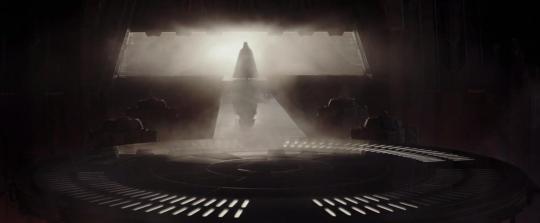




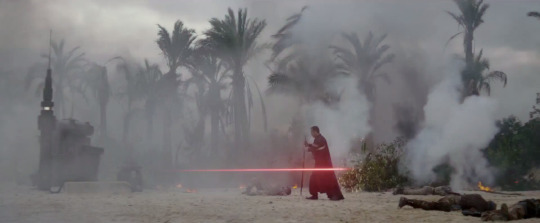
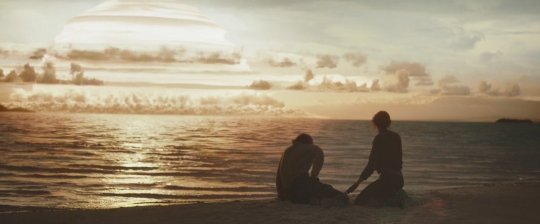



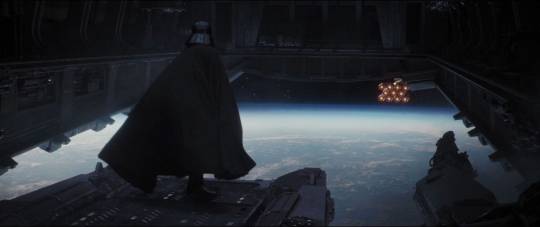
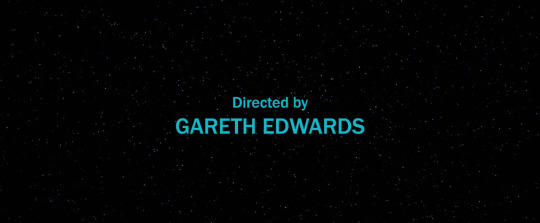
"NORMALLY YOU TRY TO HIDE YOUR INFLUENCES; YOU DON'T WEAR THEM ON YOUR SLEEVE WHEN YOU MAKE A MOVIE."
FILM: "Rogue One: A Star Wars Story"
DIRECTOR: Gareth Edwards
SCREENPLAY: Chris Seitz & Tony Gilroy
CINEMATOGRAPHY: Greig Fraser
VISUAL FX: Industrial Light & Magic
ILM: "How did the experience of watching the original trilogy influence your work on "Rogue One"?"
GREIG FRASER: The funny thing is, when it comes to "STAR WARS," there is a very particular visual language with the way the films are made. From the way they climb aboard the Millennium Falcon, to the wide shots of the Millennium Falcon going past the camera. There is a visual language that exists that, unless you’re studying it, you don’t really notice it. That occurred to me when we started "Rogue One," when Gareth basically told me, “we’re not remaking "STAR WARS." We’ll make this movie the way we would want to make this movie.” But the thing is, what was great about that, is that we could channel "STAR WARS." Normally you try to hide your influences; you don’t wear them on your sleeve when you make a movie. You try to become a little more nuanced, a little more “clever” about sort of fooling people into what your influences are. “No, I didn’t actually watch Steven Spielberg films to make this "Spielbergian" movie.” Those sorts of things. But what was great about "Rogue One" is that we were making a film that actually connected directly into "STAR WARS: Episode IV – A New Hope," by design. So if we wanted to reference anything from Episode IV, Episode V, or Episode VI, we could. We were actively encouraging ourselves to do it. For me that was a huge revelation, because normally, on any other film, you wouldn’t do that. For example, when we went back and watched Obi-Wan’s sequences aboard the Death Star, we would study how Sir Alec Guinness would move throughout the corridors, and it was very influential in the way that we did some of our movement through the Imperial security complex on Scarif. We took for granted that it was such a big place, and that the Imperials would be minding their own business and doing their own thing, and that you could have these Rebel spies, and have them actively infiltrate this heavily-fortified complex."
Sources: www.ilm.com/greig-fraser-discusses-rogue-one, Pinterest, ILM, Splash Film, Collider, Inverse, Screen Rant, various, etc...
#RogueOne#RogueOne:AStarWarsStory#Scififantasy#Scifi/Action#LordVader#StarDestroyer#RogueOneAStarWarsStory#Cinematography#GreigFraser#Jedha#LucasfilmLtd.#FilmStills#MovieStills#GalacticEmpire#AStarWarsStory#ILM#BactaTank#ImperialEra#DeathTroopers#DarkTimes#GarethEdwards#Mustafar#IndustrialLightandMagic#JedhaCity#IndustrialLight&Magic#OrsonKrennic#DeathStar#DarkLordoftheSith#SithLord
0 notes
Text
It's a relatively small thing, but I think I'd feel much more confident about the Ahsoka show if it looked different.
I understand why Rogue One's look has become the default look in live-action SW, at least the shows (to the point that The Acolyte having a different aesthetic is a moderate talking point). It's a great-looking film which is probably the Disney one that people agree on most as good (I have reservations but sure, I like it a lot). And yeah, it makes a decent amount of sense to have Mando adopt that look, while with Andor, it fits like a glove.
But leaving aside the fact that a large part of R1's visual appeal is that Edwards and Greig Fraser are both great at shooting scale (with the shows inherently operating on a considerably smaller scale), the thing is that R1 looks pretty different to prior Star Wars films. There's a reason for that. Jyn and Cassian are much lower-key characters than our usual heroes in the setting (and to be clear, this isn't a judgement of whether anyone's a good or bad character) and the whole idea of their struggle is that it's about the Rebel boots on the ground, the heroes behind the heroes.
Is Ahsoka really that? In a way, yes, but it's also set to be a show about larger-than-life characters, one a Jedi and the other a Mandalorian renegade who paints anything within reach, including her own armour, and of course the third-biggest war criminal droid of the era (Chopper might have the biggest body count but he bows to BT-1 and Triple-0 when it comes to sheer sociopathy). They have adventures with space whales, discover the World Between Worlds and encounter oddball wizard beings who speak with the voice of Tom Baker and laugh in the face of Thrawn. There's a reason they benefited from the exaggerated designs and colourful, kinetic presentation of an animated show (and comics, especially the excellent Kanan two-parter).
And an explicitly toned-down realist style kind of pushes against that vibe. The MCU and the current slew of Disney remakes show this off a whole lot - they generally feature larger-than-life characters but skew hard towards realism, as opposed to creating a heightened reality (see Pacific Rim or Mad Max: Fury Road) where those big personalities would feel more at home. Heck, other Star Wars films do that - there's a reason The Force Awakens and The Last Jedi went for bright, vibrant colours (and why Steve Yedlin brought that soulful expressiveness to TLJ in particular). Without it you tend to end up with an odd disjunct where things feel... a bit dull.
In a smaller way, I think we've already seen that with Kenobi, aside from the general trouble that show seems to have had in the area of cinematography. That show often ended up just rather bland - Tatooine is largely pale grey, while the Fortress Inquisitorius and Vader's castle come off more dingy than true halls of darkness.
To be clear, I'm really hoping that Ahsoka Tano gets a good show, and that I'm proven wrong on the visual front. But I worry that we're looking at another SW show which (leaving the whole Volume thing and its constraints aside) opts for an ill-fitting default look, instead of embracing how diverse Star Wars stories can be.
10 notes
·
View notes
Text
Vice (2018)
Directed by Adam McKay
Cinematography by Greig Fraser
Starring Christian Bale, Amy Adams, Steve Carell, Jesse Plemons and Sam Rockwell

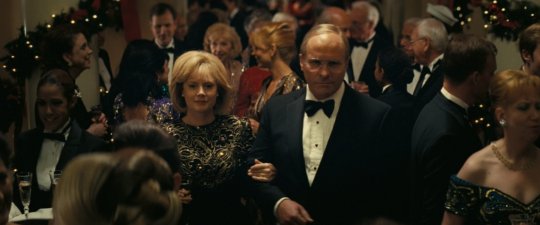


"Beware the quiet man. For while others speak, he watches. And while others act, he plans. And when they finally rest... he strikes."
1 note
·
View note
Photo

Felicity Jones and Diego Luna in Rogue One (Gareth Edwards, 2016)
Cast: Felicity Jones, Diego Luna, Mads Mikkelsen, Forest Whitaker, Riz Ahmed, Alan Tudyk (voice), Donnie Yen, Wen Jiang, Ben Mendelsohn, Guy Henry, Jimmy Smits. Screenplay: Chris Weitz, Tony Gilroy, John Knoll, Gary Whitta.Cinematography: Greig Fraser. Production design: Doug Chiang, Neil Lamont. Music: Michael Giacchino.
It takes a lot of work (and money) to sustain a myth. Rogue One, the first of the standalone (i.e., not an official Star Wars episode) films based on George Lucas's corpus of myth about a galaxy far away and a long time ago, doesn't really stand alone. It's there to plug a hole in the larger Star Wars narrative: How could the Empire have been so careless as to leave a critical vulnerability in the Death Star, so that Luke Skywalker could take advantage of it as easily as he used to bullseye womp rats in his T-16? It was, of course, an inside job, a bit of sabotage by an engineer named Galen Erso (Mads Mikkelsen). So what we have in Rogue One is essentially Star Wars: Episode 3.5. At the time it was released, some wondered if it was worth two hours and 13 minutes or $200 million to fill a plot gap. Or to create vivid and heroic characters only to kill them all off by the end of the movie. Now that we've had the excellent TV series Andor, essentially a prequel to Rogue One, the expenditure seems a little less gratuitous. But was it really necessary to reanimate (literally) an actor who died in 1994 to give the illusion of continuity between films: If we can accept that James Bond can be played by many actors, or that the entire crew of the Starship Enterprise can be "rebooted" for a new series of Star Trek films, why couldn't we accept that someone other than Peter Cushing could play Grand Moff (here he's just a general) Tarkin? There's something macabre about superimposing a dead man's face on a live actor's, and I hope Guy Henry got paid well for playing Tarkin from the neck down. These objections aside, Rogue One is a well-played war movie, with just enough resemblance to real wars to make it somewhat unsettling: The scenes in the capital of Jedha have an eerie similarity to news footage coming out of cities in Syria and Iraq, and the combat in tropical Scarif evokes any number of war movies set in Vietnam or in the South Pacific during World War II. In fact, Rogue One may be the most visceral and depressing film in the Star Wars canon.
0 notes
Text
Dolo Flicks: Dune: Part Two Review - Step Into the Cinematic Universe of Denis Villeneuve's Hollywood Epic
(adsbygoogle = window.adsbygoogle || []).push({});
By Hector Franco
Follow @MrHector_Franco !function(d,s,id){var js,fjs=d.getElementsByTagName(s)[0],p=/^http:/.test(d.location)?'http':'https';if(!d.getElementById(id))(document, 'script', 'twitter-wjs');
Follow @Frontproofmedia!function(d,s,id){var js,fjs=d.getElementsByTagName(s)[0],p=/^http:/.test(d.location)?'http':'https';if(!d.getElementById(id))(document, 'script', 'twitter-wjs');
Published: March 13, 2024
Denis Villeneuve Sets a New Standard for Hollywood Epics with Latest Release
We are less than halfway through 2024, and what will likely be considered the year's best film from both a commercial and critical standpoint has been released. Denis Villeneuve's anticipated sequel, Dune: Part Two, has hit theatres and is one of the finest Hollywood epics of the decade.
The follow-up is a continuation of Dune: Part One, picking up where the movie left off. It follows the journey of Paul Atreides (Timothee Chalamet), his joining the Fremen, and his ascension to the throne as emperor on Arrakis. Both films are based on the 1965 science fiction novel Dune by Frank Herbert.
Upon viewing the film, one aspect that sets the Dune sequel apart from others in the science fiction genre is the all-star cast. A mix of veterans and new-age stars permeates throughout Dune: Part Two, further enhancing the overall quality of the movie. The cast includes Javier Bardem (Stilgar), Timothee Chalamet (Paul Atreides), Stellan Skarsgard (Baron Vladimir Harkonnen), Zendaya (Chani), Austin Butler (Feyd-Rautha Harkonnen), Rebecca Ferguson (Lady Jessica), Josh Brolin (Gurney Halleck), Florence Pugh (Princess Irulan), Dave Bautista (Glossu Rabban Harkonnen) and Christopher Walken (Emperor Shaddam IV).
Most films of the exact nature as Dune: Part Two are judged primarily on their action sequences. In this instance, the sequel does not disappoint. While the action may not reach the heights of The Battle of Helm's Deep in The Lord of the Rings, the film's level of consistency in each battle makes it to where it doesn't need to.
From the start, the cinematography and color grading by Greig Fraser gives each encounter a unique look. One of the opening scenes has Paul, Lady Jessica (Rebecca Ferguson), and a group of Fremen fending off an attack from a Harkonnen patrol. The orange backdrop that swallows the setting makes the scene stand out. A similar sequence occurs in the film's second act when the focus is on the Harkonnen's homeworld and the full scope of H.R. Giger's influence. The planet's black sun puts a pure white filter on the inhabitant's skin, contrasting the black buildings.
Hollywood films often input their blockbusters with an overabundance of romanticism that frequently weighs down a movie's momentum. However, in Dune: Part Two, the romance between Chani (Zendaya) and Paul (Timothee Chalamet) never overstays its welcome by becoming overly intimate or bordering on feeling unnatural. The romance is interwoven with Paul's step-by-step rising embrace of the ways of the Fremen, from learning their language, riding a sandworm, and participating in raids on spice fields.
While many themes are explored throughout both of Villeneuve's Dune films, two of the most apparent are how religion and stories can influence culture. Specifically, with Paul (Timothee Chalamet), the films highlight how charismatic leaders can overtake a community, leading them down a path of perceived righteousness through war.
The legendary Hans Zimmer composed the music throughout the film. Zimmer's score adds gravitas to the scenes with Chani and Paul, highlighting the significance of their relationship.
As far as negatives, Dune: Part Two has very few flaws. At 165 minutes, the story and characters are worthy of the three-hour runtime, but every minute is felt by the end of the second act. As strange as a comparison as this could be, similar to Zack Snyder's 2016 film Batman vs. Superman: Dawn of Justice, Dune: Part Two feels like it would have been better served with a more extended cut. More scenes with Lady Jessica, while she continues to proselytize the Fremen with the Lisan al Gaib prophecy or with the Emperor (Christopher Walken) and his daughter Princess Irulan (Florence Pugh) to delve into their motivations with the Bene Gesserit group, would have helped viewers who aren't as familiar with the story of Dune. The number of characters can feel daunting for an audience not thoroughly infatuated with the lore.
Dune: Part Two's third act elevates the film from great to remarkable. The ending sequence that features Paul (Chalamet) leading the Fremen to attack the Sardaukar troops of Emperor Shaddam (Christopher Walken) with sandworms and the Atreidis family missiles is epic in scope. The knife duel between Paul and the Harkonnen leader Feyd-Rautha (Austin Butler) is utilized perfectly as the concluding battle of the film. The last sequence was wonderfully done with the start of the holy war between the great houses and Chani (Zendaya) leaving on her own. The ending perfectly concludes the story at hand while leaving the audience wanting to see what happens next.
Villeneuve has stated that he is working on a third and final film based on the book Dune Messiah. In some ways, the conclusion of Dune: Part Two is satisfying enough that a third film never materializing won't feel like a detriment to the other entries in the series.
What Villeneuve's Dune films best showcase is that epic storytelling can be done with one singular voice and not by committee. Win or lose, more auteurs should be allowed to tell grand stories. As Villeneuve has shown Hollywood, it can be done at the highest level and still make a profit.
(Featured Image: Niko Tavernise/Warner Bros.)
1 note
·
View note
Photo
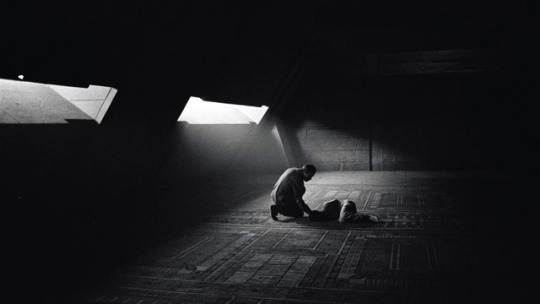

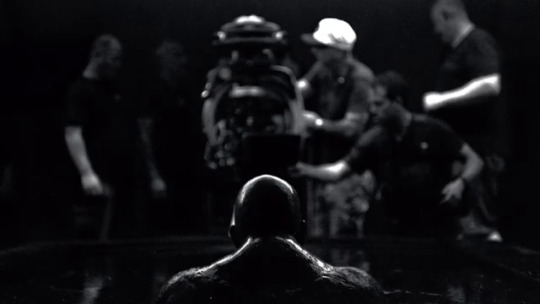



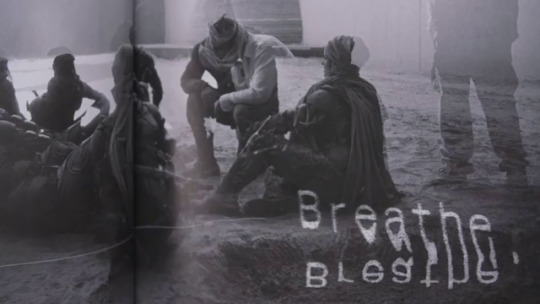

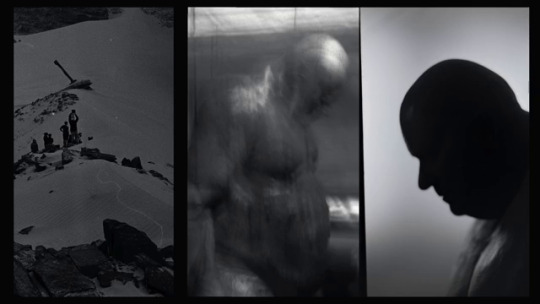
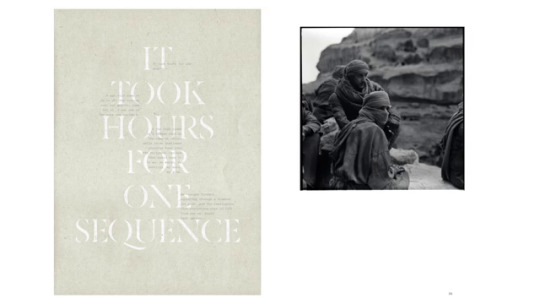
"We wanted to have a visual/poetry/design slam where each person, being inspired by the riffing and discussion of the other’s, use one anothers work to launch an idea from. It was the most punk rock experience i've had, with no rules. No reasons, and no limitations. [...] It gives me great pleasure, and a great honor to introduce our book." — Greig Fraser
THE ART AND SOUL OF DUNE, 2021
photos by Greig Fraser & words by Josh Brolin
#dune#dune 2021#duneedit#dunenetwork#film#denis villeneuve#josh brolin#timothee chalamet#timothée chalamet#rebecca ferguson#chang chen#oscar isaac#stellan skarsgard#stellan skarsgård#javier bardem#jason momoa#skarsgardedit#*#who: stellan skarsgård#other: greig fraser#other: josh brolin#this book would be such a luxury for me but i want it#these photos look so good#and i'd love to read josh's prose ;-;#despite my gripes about the prosthetics though they do look fantastic#the craft that went into that holy shit
624 notes
·
View notes
Text
The Batman's Cinematography
The Batman is one of the best cinematically filmed movies I've seen in recent times. It changed so much of my perspective on how a superhero comic-book movie can be shot. How it doesn't all have to be VFX. Matt Reeves and Greig Fraser made it look as so real, as Matt Reeves keeps saying, he wanted it to be visceral.
1. What i mainly noticed was, The Batman was majorly POV.
We were the characters. We were really there, walking behind Gordon while entering the mayor's house. Not just that but the brilliant car sequence scene. It was more like we were in the middle of it all, experiencing it all, when they chose to place the lens where they did. Matt and Greig intended on doing this. Matt said in a recent interview how Greig made silicon filters, which when exposed to water also got wet, basically how our POV would be if stood in the rain.
2. They used anamorphic lens.
There were several close up shots in the movie, hence they needed a wider view. Anamorphic lenses provide a wider ratio and they distort the edges of the frame. So this distortion of the edges brings center sharpness and thus bringing all our attention to the center. These anamorphic lenses bring out involuntary beautiful lateral flares too. But my favourite characteristic of the these lenses are the 'Bokeh' they produce, which is the out of the focus area in the background. They are far more soft and are ovul in shape, in difference to the circular shape in spherical lenses. As you might notice in the GIF I've attached to this post.
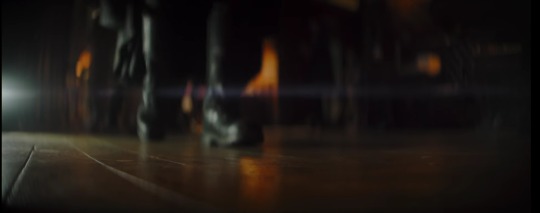
3. I love the sodium vapour.
The orange-yellow of the sodium vapour, the red, cyan and neons really brings out the qaulity of Gotham along with it's own gothic darkness. The contrast created by Greig Fraser is fucking magnificent. Gives Gotham it's own quality, considering it isn't a real city. Truly, the world building of Gotham as this dark gothic isolated crime inducing city makes Gotham a character in itself. There's something about it, you can feel even in the daylight scenes, the darkness to it. Also I love how they made Batman's night vision red.
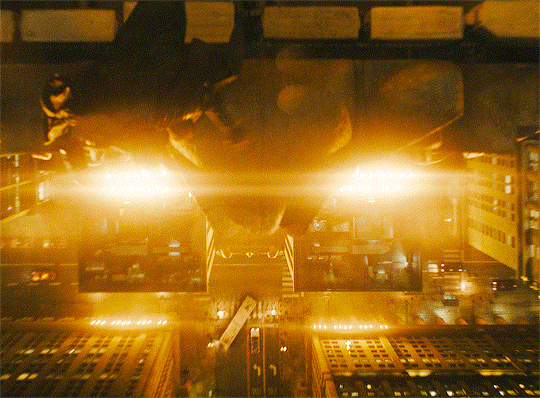
4. Se7en and The Batman
Besides the storyline, which seems majorly inspired by Se7en, two detectives running around the city solving the clues and murder cases, trying to find the psychopathic serier murderer. It is the rain. Everything was wet. Kudos to the set design. I feel like Matt tried capturing the same aesthetic as Se7en, with the rain, dark gothic environment, close up shots of the clues, and again the sodium vapour.
5. Colour Grading
So something very technical here. A lot of the scenes were digitally developed negatively, and then a process called IP - Interpositive was done to it. In IP, a positive image is developed from a edited camera negative, which gives a orange-based motion picture, and makes it low-contrast which helps to preserve the shadow details. Considering it's DC, and most of the film was shot at night in dark settings, and in shadows, this process was very helpful. And the colours that form again out of the negative images, are distinct and provide a more inmersive visual experience. I really appreciate how they tried no to over-saturate the orange, red and cyan, and desaturate the shadows.
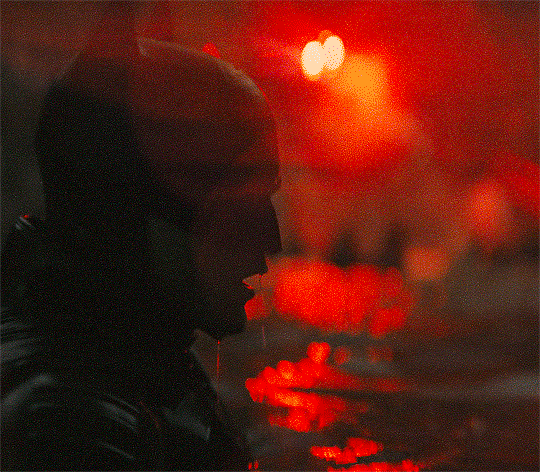
All in all, the anamorphic lenses, colour-grading, aesthetics, camera angles and framing, all these elements worked and matched with each other to give us such a unique film experience. For once, giving gotham its own features and aesthetic, than inspiring gotham from any other city we already know of.
I hope the cinematography of The Batman can change and inspire cinema for years to come and especially comic-book movies, because in the process of making a comic book superhero movie, filmmakers forget it's just another story they wanna tell, and end of the day it's all cinema.

#cinema#the batman#batman 2022#the batman 2022#robert pattinson#marvel#dc comics#dc universe#dc edit#batman edit#movie culture#movie analysis#movies#cinema art#cinematography#dark academia#zoe kravitz#matt reeves#greig fraser
133 notes
·
View notes